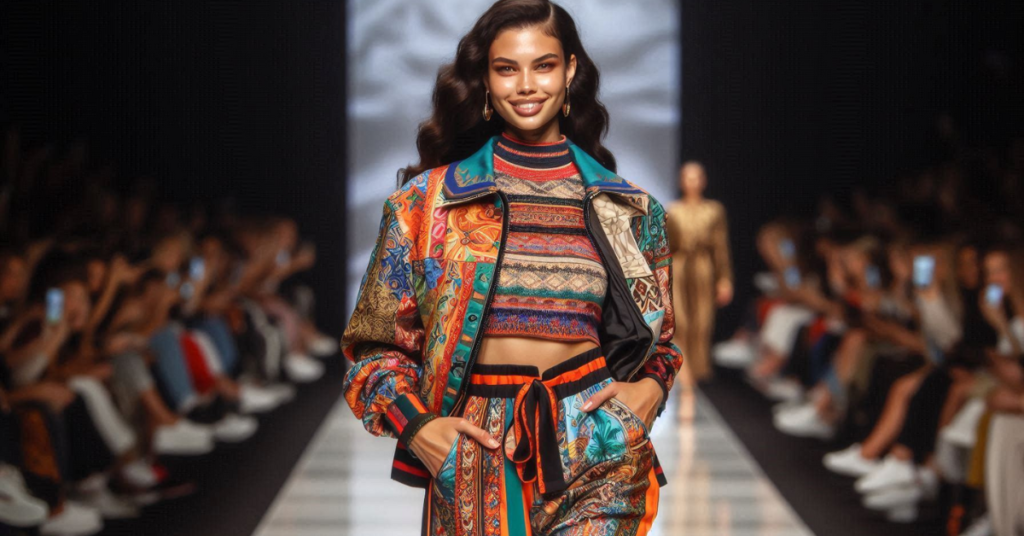Japanese Street Fashion: A Comprehensive Overview
Japanese street fashion is a vibrant culture. Its creativity, individuality, and boldness are well-known. It’s more than just a style; it’s a way to express oneself. This article looks at a fascinating fashion movement. It explores its history, subcultures, and global impact. It aims to inspire and inform fashion fans of all levels.
A Brief History
Japanese street fashion began after World War II. Western styles influenced it, and it emerged as a singular occurrence. In the 1990s, areas like Harajuku became youth culture epicenters. Young people gathered there to showcase their inventive styles. This era birthed many unique subcultures that thrive today.
Read Also: The Clothing Industry: A Global View
Key Subcultures
Lolita
Lolita fashion has an elegant, doll-like look. It draws from the Rococo and Victorian periods. Key elements include lace, ribbons, and frilly dresses, often in pastel colors. Lolita has several sub-styles, including Gothic, Sweet, and Classic Lolita. Each has a unique look.
- Symbolism of Colors: Colors in Lolita fashion are significant; pastels often symbolize innocence and sweetness, while darker tones in Gothic Lolita convey mystery and elegance. [Insert high-quality image of a Lolita fashion model]
Gyaru
Gyaru (often “gal”) is a style. It values glamour, youth, and rebellion. It features dramatic makeup, bleached hair, and trendy clothing. Gyaru has substyles. Hime Gyaru is princess-like and elegant. Kogal is a stylish take on a high school uniform.
- Historical Influences: Gyaru fashion draws inspiration from Western pop culture and the desire to break away from traditional Japanese beauty standards.
Harajuku
Harajuku fashion stands out as Japan’s most prominent street style globally. People know Harajuku fashion for its eclectic, avant-garde style. It encourages mixing and matching different styles, colors, and patterns. It is a melting pot of creativity where individuality reigns supreme.
- Harajuku fashion is personal. Two people in Harajuku style can look very different. Their outfits show their unique tastes and creativity.

Mori Girl
Mori Girl, meaning “forest girl,” is a subculture that emphasizes natural, earthy aesthetics. This style often features layered clothes, muted colors, and vintage pieces, creating a look reminiscent of a fairy tale or a walk in the woods.
- Symbolism of Clothing: The layers and natural colors symbolize a connection to nature and a simple, rustic lifestyle.
Decora
Decora is known for its playful and childlike appearance, featuring abundant colorful accessories, hair clips, and vibrant clothing. The goal is to “decorate” oneself as much as possible.
- Historical Context: Decora emerged in the late 1990s, reflecting a desire for fun and self-expression amidst Japan’s economic stagnation.
Also Read: Y2K Fashion: A Blast from the Past Shaping Today’s Trends
Gosu Rora (Gothic Lolita)
Gosu Rora, or Gothic Lolita, is a darker and more mysterious take on the traditional Lolita style. It incorporates elements of Gothic fashion, such as dark colors, crosses, and Victorian-inspired clothing.
- Cultural Influences: This subculture draws heavily from Western Gothic traditions and Japanese visual kei music.

Impact on Global Fashion
Japanese street fashion shapes global style directions. Its bold, innovative styles have inspired designers and fashion houses worldwide. Brands like Comme des Garçons and A Bathing Ape are now famous worldwide. It shows the global impact of Japanese street fashion.
Modern Trends
In recent years, Japanese street fashion has continued to evolve. Current trends include:
- Minimalism’s Resurgence: smoother lines and color pallets to green return. Techwear: futuristic designs, materials, and combined functionality with style. Fashion Vintage and
- Thrifting: sustainable fashion practices suit the fashion already.
- Unisex Fashion: The new gender-neutral clothing items replace the traditional old stuff.
- K-pop Influence: The funky, joyful, shining, and striking style is inspired by Korean pop culture.
Dive Deeper into Subcultures
Origins and Influences
Each subculture within Japanese street fashion has its origins and influences. For example, Lolita fashion draws heavily from Western historical periods, while Gyaru was influenced by American pop culture. Harajuku fashion is rooted in Japan’s post-war desire for self-expression and creativity.
Unique Characteristics
- Lolita: Emphasizes modesty and a childlike innocence.
- Gyaru: Focuses on exaggerated femininity and social status.
- Harajuku: Celebrates individuality and the rejection of mainstream fashion norms.
- Mori Girl: Highlights a connection to nature and a simplistic lifestyle.
- Decora: Centers on colorful self-decoration and playful aesthetics.
- Gosu Rora: Combines Gothic elements with the traditional Lolita style.
Visual Appeal
Visual representation is vital to genuinely appreciating the diversity of Japanese street fashion. High-quality images and infographics can showcase these styles’ intricate details and bold aesthetics. Whether it’s a detailed Lolita dress or a striking Harajuku ensemble, visuals help bring the fashion to life.
Conclusion
Japanese street fashion is a vibrant mix of creativity and individuality. Subcultures like Lolita and Harajuku offer unique styles. Its global impact is profound, influencing designers and fashion lovers worldwide. By exploring its origins, traits, and trends, we can better appreciate its diversity.
High-quality visuals, personal stories, and expert insights make this culture accessible. Respectful engagement with these styles celebrates their artistry and innovation. As Japanese street fashion evolves, it inspires and shapes global trends.
